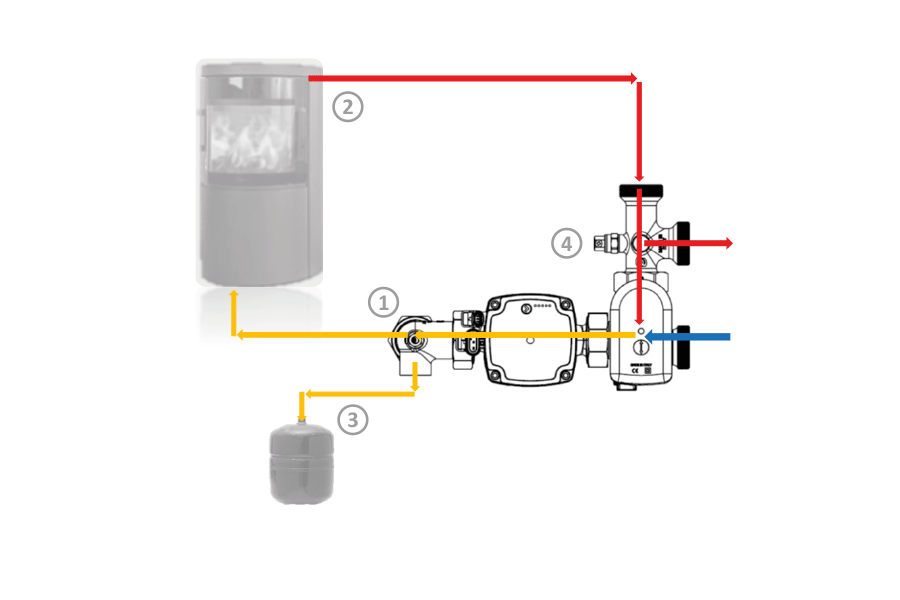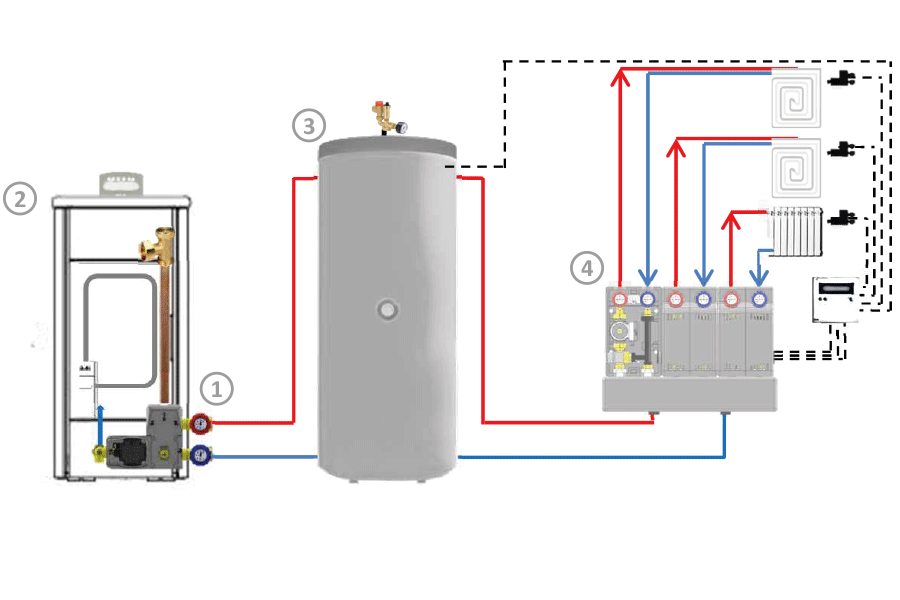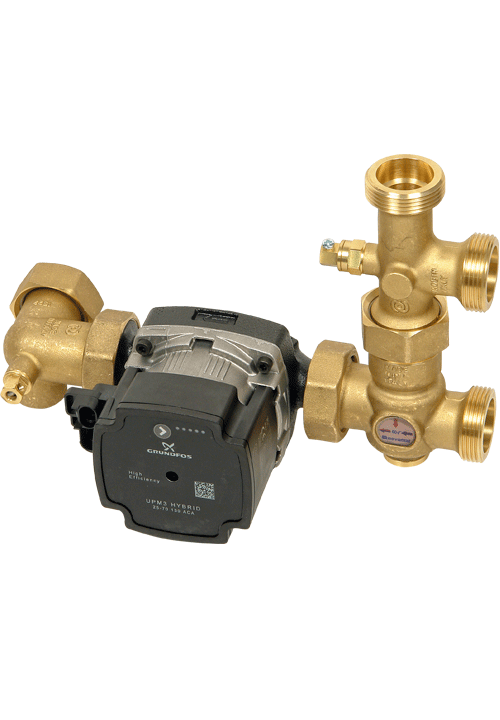BIOMASS
Biomass Circulation Groups
BIOMASS HEATING CIRCULATION
Mod. T - NOVAMAT
Cod.19925100-50/60
The NOVAMAT T group is able to ensure circulation and anticondensation function between a biomass generator and a heating circuit. The group integrates:
• Primary circulator
• Thermostatic anti-condensation valve
• System and generator delivery / return connections
• Connection for the expansion vessel
• Insulating cover
Easy to use, NOVAMAT T is the ideal product for the installation of bio- mass generators.
1 - Kit NOVAMAT T-130 Erp
2 - Biomass generator without integrated pump
3 - Expansion vessel
4 - Themperature sensor

1 - Kit NOVAMAT T-130 Erp
2 - Biomass generator without integrated pump
3 - Tank
4 - Heating circuit zone


The Product
The NOVAMAT group is a pre-assembled and tested hydraulic kit able to guarantee the circulation of the carrier fluid and the anticondensation function between a biomass generator and a heating circuit.
Ensuring a correct pre-heating phase and a return temperature at the generator always correct, guarantees a significantly higher efficiency and lifetime of the generator. NOVAMAT becomes fundamental in the case of circuits combined with a thermal accumulation since the constant low return temperature could irreparably damage the primary exchanger.
NOVAMAT is supplied as standard with both primary and system side connections, so as to optimize installation times and avoid any assembly errors.
Layout with outputs to the right but can easily be made reversible by adapting to different installation needs. Insulating cover and connection for the standard expansion vessel complete the product.
In the case of “Erp” model the group is supplied as standard with Grundfos UPM3 Hybrid circulator, 130mm or 180mm length.
The factory circulator is set to proportional pressure but can easily be set:
PWM: external control via PWM PP: Proportional pressure
CP: Constant pressure
CC: Constant curve
AA: AUTOADAPT
A wide selection of settings for the anti-condensation valve, the possibility of replacing the thermostatic element directly in the installation and numerous accessories make NOVAMAT extremely easy to use and adaptable to different system requirements.
